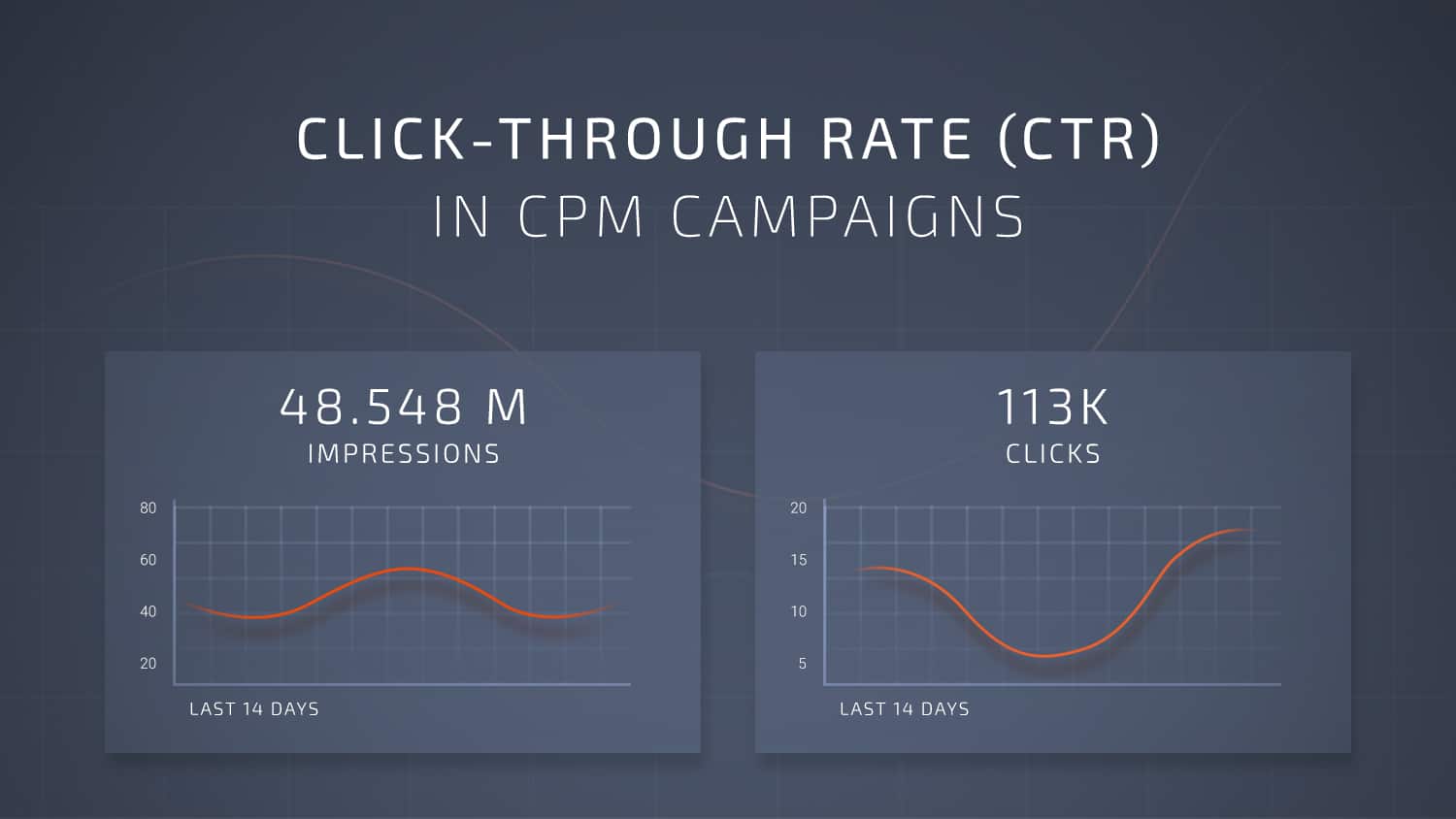Media Buying 101: What is Real-Time Bidding?
Last updated on May 16, 2018 by Mobidea Academy 10 min readYou are currently in the "Media Buying" - Learning paths

Media Buying Strategy: The Beginner’s Guide
13 min read

4 Tips for Media Buying Beginners
3 min read

Media Buying 101: What is Real-Time Bidding?
10 min read

How to Create a Killer Media Buying Budget Strategy
9 min read

The 10 Main Media Buying Tips to Skyrocket Your Campaigns
12 min read

Bidding Strategies in Media Buying: Sprint or Marathon?
6 min read

Media Buying 101: What is Header Bidding & How Does It Work?
6 min read

5 Aspects About CTR You Should Know for CPM Campaigns
4 min read
Table of Contents
ToggleIntroduction
What does Real-Time Bidding or RTB mean in advertising?
Time to find out!
Online marketing lingo is cluttered with abbreviations, various technical terms, buzzwords, and they only seem to grow in number with every passing day.
In that way, the concept of real-time bidding and programmatic advertising is no different.
Still, these terms are really worth knowing and understanding, as they represent the most influential media buying methods of today, as well as a possibility to significantly increase your affiliate revenue.
At a first glance, programmatic just means that the advertising is driven by software, and allows for a much greater range of parameters to be taken into account when dealing with media inventory than old-school methods allow.
That being said, there is quite a bit more than meets the eye, so let’s scratch beneath the surface.
Ready to have real-time bidding explained to you and understand how real-time bidding platforms are changing the affiliate industry?
Let’s go!
What is Real-Time Bidding?
Real-Time Bidding (RTB) is a method which allows advertising inventory to actually be sold and bought on an effective per-impression basis, through programmatic auctions which are reminiscent of financial markets.
There are two sides to any ad and media buying interaction, whether in online or traditional marketing.
In both cases, there are publishers and advertisers, who follow the rules of supply and demand in their negotiations and trades.
Publishers offer their media inventory – ad locations on their pages (both physical and digital), radio and TV air time, and so on.
On the other hand, advertisers try to find the best fit for them and buy this inventory at an agreed price.
When online marketing was at its infancy, online media buying largely followed the physical format.
Learn More: The 10 Main Media Buying Tips to Skyrocket Your Campaigns in 2017
Marketing reps would negotiate between advertisers and publishers trying to find the best deal for their side.
Whether in print, TV, or online, sales people would discuss price, target audience, ad placements, number of impressions, and sign an insertion order in case the agreement had been made.
As internet took off, however, things started to change.
The ability to follow more metrics and automate a lot of processes has led to something called programmatic advertising.
Because of a much clearer audience segmentation, and traffic monitoring, it was possible to have computers select the best offers based on the given parameters, therefore reducing the human error.
At this point, you might be asking yourself:
“What does this have to do with real-time bidding?”
Well, even though programmatic advertising isn’t really new, it took a while for it to be adopted by all the channels.
For example, search result ads are inherently programmatic, but visual ads, especially in expensive, high-volume campaigns were for the most part negotiated via traditional channels, by phone or email, until real-time bidding was developed.
Real-time bidding is essentially a step forward in programmatic advertising.
It allows for buyers to bid for individual impressions across a large number of sites at the same time, almost instantaneously.
This way, they can get much more bang for their buck, as they can target their preferred demographic with a significantly higher precision.
While real-time bidding advertising is often considered synonymous with programmatic advertising, the truth of the matter is that it is only a protocol, a tool, and it has programmatic characteristics.
For example, programmatic direct is another type of media buying, which uses a slightly more traditional approach of buying bulk impressions.
In fact, it allows advertisers to reserve inventory – a feature that is not available if you use real-time bidding RTB.
How does Real-Time Bidding (or RTB) work?
When visitors come to a site, they are greeted with website content, along with ads, which are typically placed at certain areas of the page.
Related: Mobile Spots – Does Size Matter?
Every time a user sees an ad, that instance is considered as one impression.
For example, when they see a top banner ad on the first page they visit, that is considered as a first impression for that particular ad placement.
Obviously, for the second page, it would be a second impression, and so on.
Bear in mind that it doesn’t have to be the same ad, just at the same location, and this is exactly what publishers are selling as their inventory – ad impressions.
When it comes to RTB marketing, there are several key values that both media buyers and sellers need to understand:
Bid price, winning price, and frequency cap.
The process in itself is fairly straightforward, and the first impression is simply awarded to the highest bidder, the second to the second highest, and so on.
Let’s say that there’s a fishing blog visitor.
They visit 10 pages on the site, and that site has one juicy banner ad at the top of each page.
As soon as that visitor shows up on the site, the bidding process begins and advertisers offer their bid prices and frequency caps.
The first bidder is a major sporting goods store, and they offer a bid of $1.8 CPM, with a frequency cap of 4.
The second bidder – a lake-side resort – offers $1.4 CPM with a frequency cap of 5, and the third is a small-time camping affiliate site that offers $1 CPM with a frequency cap of 6.
Obviously, the first bidder won, but this is where the frequency cap comes into play.
While the bidding was done on a per-mile basis (a price that an advertiser is willing to give for a 1000 impressions), they created a limit that one particular visitor can see that ad only a certain number of times per day on a single site (in this case, 4 times.)
This in turn means that the sporting store bought the first 4 impressions at $1.8 CPM.
Since the visitor saw more than 4 impressions, it is the second bidder’s turn, and they show an ad following 5 pages.
Since their bid was $1.4, the lowest winning bid for the first place would be $1.41.
If the sporting goods store was clairvoyant, this would be their bid price, and they’d save up to 25% on their bid.
Since the second bidder had a frequency cap of 5, it left an impression over to the third bidder.
Even though their frequency cap was the highest, the affiliate site gains only one impression, as that was all that was left over from that one user’s activity on the site.
If someone offered $1.01, they would have won the third place and that one impression, instead.
This whole bidding process happens almost instantaneously, and advertisers don’t bid blindly or just on one site.
Instead, they set up a range of bid values based on different parameters which are then applied across a multitude of sites.
This way, they can maximize the ad efficiency, as they can target their ideal customers all over the internet, instead of just targeting specific, niche sites.
In addition, advertisers can also bid CPC, CPA, allowing for even greater flexibility.
Let’s say the sporting goods store had someone look at a particular backpack model.
This is stored in a cookie, along with various other information and browsing habits from other cookies.
Once this person visited the previously mentioned fishing blog, the sporting goods store was willing to pay more than usual, hoping that they could incentivize that prospect to commit and buy the backpack, which is why they offered more than the others, and subsequently won the bid.
Knowing what to bid for and how much to actually bid really is a mixture of fine art and hard science.
It all boils down to how valuable that impression or action is to you, and whether or not your ROI (Return on Investment) is sufficient.
This process is not reserved solely for traditional web ads, either.
It’s often used in native ads, particularly the in-app, and in-game ones.
For example, an ad impression that is shown in a mobile game between the levels can also be subjected to this bidding process.
A mobile Supply-Side Platform runs an auction for all of the advertisers interested in showing an ad to that particular player.
The highest bidder wins, and the ad is shown to the player almost instantly.
Ad targeting has become so effective that it can sometimes get downright eerie.
You might be looking up airplane ticket prices.
Seconds later, you’re shown native ads on Facebook, advertising last-minute vacation offers and the lowest airline fares.
Related: 5 Fundamentals of Native Ads to Boost Your Profits
This is all moderated and managed via ad-exchanges, Demand-Side Platforms and Supply-Side Platforms, which also make a part of programmatic marketing.
Now that you’ve become acquainted with RTB digital advertising, it’s time to explore ad exchanges, Supply and Demand-Side Platforms!
Ad Exchanges, Supply and Demand-Side Platforms
In order for real-time bidding to work there needs to be some form of a communication platform that serves as an intermediary between publishers and advertisers.
Traditionally, even before RTB, ad exchanges have been used in this sense.
Simply put, ad exchanges are online databases of all available media inventory from the sites that are a part of that ad exchange.
This allows advertisers to easily bid on multiple sites, based on their target audience, and all the other parameters that would have been negotiated manually before.
This model – while still present in the online marketing world – is becoming slightly outdated.
The emergence of more dynamic Demand-Side Platforms (DSPs) and Supply-Side Platforms (SSPs) has allowed for an even greater flexibility in choosing the best impressions.
Learn More: 5 Advantages of Using a Demand-Side Platform (DSP)
Supply-Side Platforms aggregate all the supply.
This allows publishers to manage their inventory, while DSPs do the same for advertisers.
In addition, SSPs and DSPs are exclusively used for RTB and are optimized for it.
SSPs collect information from multiple ad markets, giving advertisers a much greater offer to choose from.
DSPs give a much greater range of bids for the same inventory, making publishers earn more than they would have with traditional ad exchanges.
With the rising popularity and effectiveness of Supply-Side Platforms, many publishers and advertisers have switched over, which wasn’t lost on traditional exchanges.
In that sense, most ad exchanges are either including a DSP functionality to their offers, or completely changing their business into this new model.
I guarantee that this is exactly what the Top 10 ad exchanges have done and will continue to do!
How can you Benefit from Real-Time Bidding?
Simply put, RTB allows for greater efficiency.
Advertisers get to choose exactly where your ad is going to be placed, and publishers benefit from the contextual ad targeting that allows for better conversion rates.
Before, there was a perceived issue that RTB would drop the value of media inventory as people could simply bid as little as possible.
This problem has been fixed for the most part, as exchanges and SSPs allow publishers to set up minimum prices for their inventory, usually known as price floors.
Since RTB works well with specialized and niche sites, affiliate marketers can greatly improve their performance.
For the most part, a good affiliate site is already optimized with a clear vision of its function and target audience.
Whether your site is a review, coupon, or uses some other type of affiliate marketing, the increased competition from the advertisers can increase your profit margin.
Ideally, you’ll perform some additional research and testing so as to establish what kind of bids are most lucrative for you, and go from there.
The unfortunate side effect of this flexibility is that RTB does require a bit more afterthought than traditional media buying.
It seems that bidding high gives you a much higher chance that your ad will be seen.
Even so, you have to balance out your budget, number of impressions per visitors, and how deep individual sessions are for any given site.
After all, your low bid is worthless if your ad is never shown because competition has hogged all the impressions.
As always, fraud is an issue of some importance, so be wary and use only trusted platforms, exchanges, and programs.
If the flexibility and efficiency aren’t enough to persuade you, consider the current marketing trends.
Per Dun & Bradstreet’s report, as of May 2017, 65% of B2B businesses use programmatic advertising, which is a significant increase from the 54% that were using it in 2016.
If you combine that with the increasing popularity of DSPs, it’s only a matter of time until it will completely phase out older methods.
While it does take a bit of time and effort to master the ins and outs of RTB and programmatic advertising, the pros outweigh the cons by a large margin, so you should really consider switching to it, if you haven’t already.
Conclusion
Real-Time Bidding is a super complex process that’s here to simplify the bidding process and help affiliate marketers take their revenues to new heights.
I hope this article has allowed you to gain some important insights and to finally grasp that super elusive real-time bidding definition you were looking for.
Who knows?
You can use optimal real-time bidding for display advertising like the best of them!
Maybe you’ll even be crowned the next Real-Time Bidding champ, becoming able to use this programmatic technology to improve your affiliate marketing game!









